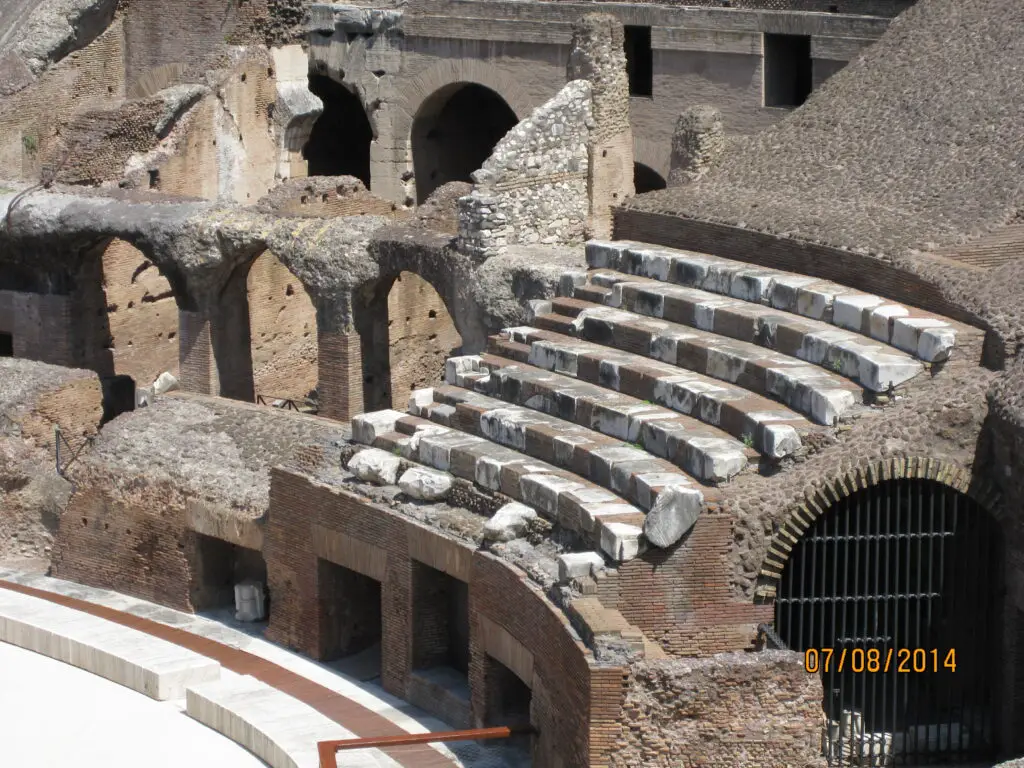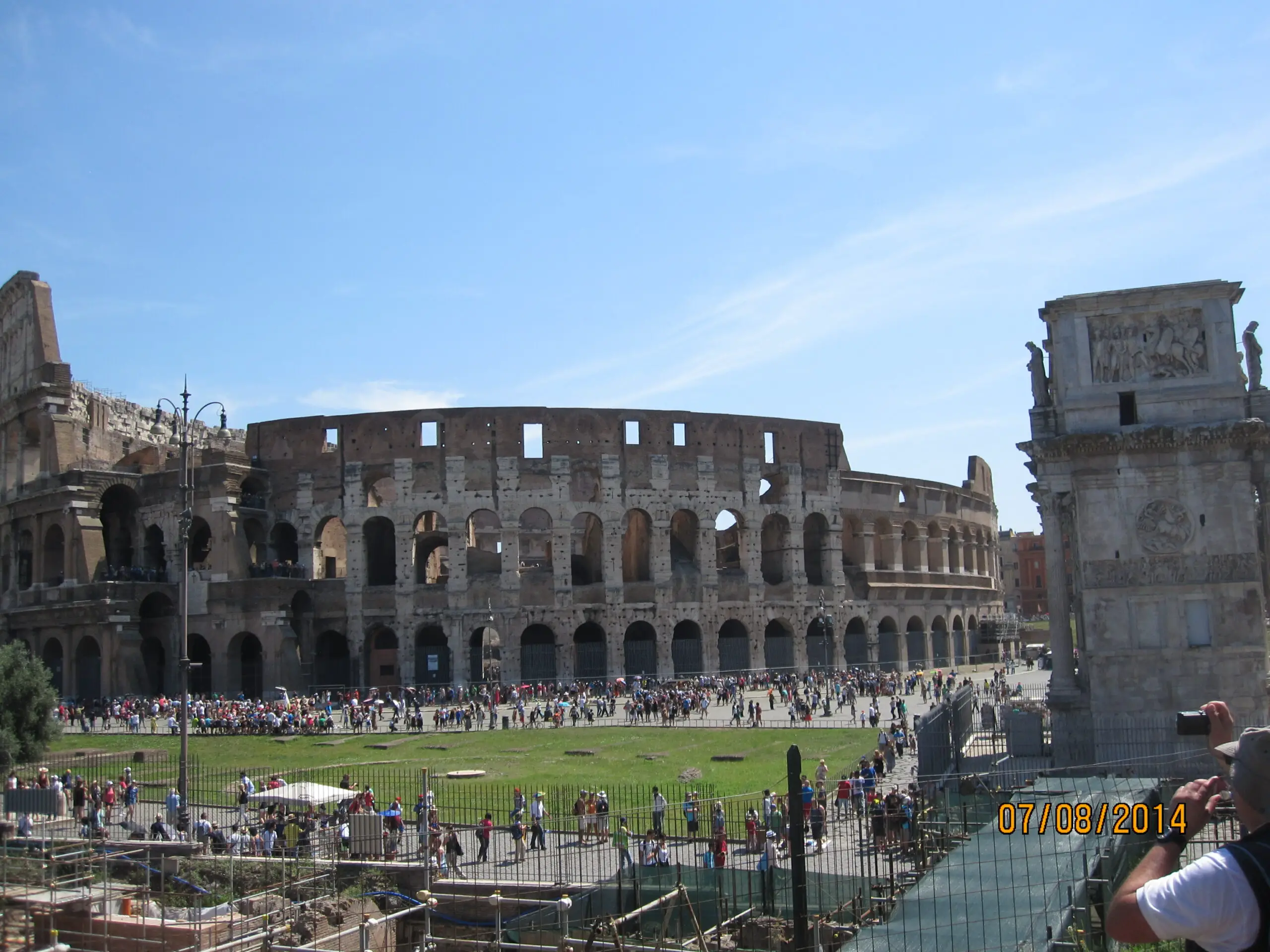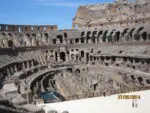Everybody knows the Colosseum in Rome and that Gladiators fought in it. But many don`t know that it wasn`t until 80 AD that the Colosseum was finished.
So where did the Gladiators fight before the Colosseum was built? Also, Gladiators did not only fight in Rome but all over the Roman Empire. Did the structures where Gladiators fought differ depending on the part of the roman empire?
Let`s find answers to these questions!
Gladiators fought in arenas like the Colosseum. Some arenas, especially during the Roman republic, were only temporary. While arenas in the western part of the Roman empire were usually specially built for gladiatorial games the arenas in the eastern part were mostly remodelled theatres.
Where did Gladiators fight in Rome?
The Colosseum in Rome is the most famous arena where gladiatorial games were held. But it wasn`t finished until 80 AD.
Before the Colosseum was finished in 80 AD gladiatorial games were held in temporary wooden arenas that would often be built on the Forum Boarium.
The Colosseum
Built between 72 and 80 AD by the Roman emperors Vespasian and Titus the Colosseum was and still is the most notable arena where Gladiators fought.
Apart from gladiatorial fights, the Colosseum was also used for animal hunts, public executions and even a naval battle, more on that here.
Check out my article here to find out in which order the executions, animal hunts and gladiator fights took place.
Another name for the colosseum is the Flavian amphitheatre. Named after the Flavian dynasty that built it.
Colosseum is not the original name of the building. It wasn`t until the 6 century AD that the amphitheatre in Rome was called Colosseum. Not because of its size but because of the colossal statue of Emperor Nero that the emperor Hadrian had moved in front of it.
The Colosseum was not the first amphitheatre that was built. But it was the biggest one. Between 50.000 and 80.000 visitors could watch the events on the sand-covered, oval ground in the middle.
The reason for the oval form of the Amphitheatre is that neither animals nor gladiators could escape into a corner and prevent blind spots that would have hindered the visitors experience.
The Amphitheatre (Amphitheatre means that two semicircular theatres were put together to form one big Amphitheatre) was an architectural masterpiece.
Since the Italian sun could be quite hot a giant awning could be extended. Extending and obtaining the big sun sail was the task of an entire Department of roman navy soldiers that were stationed close to Rome. Of course, the awning only offered shade to the visitors, the battleground in the middle of the arena was not shady.
That battleground had a basement from where wild animals, gladiators and even entire trees could be raised into the arena.
There was even a direct tunnel to the Ludus Magnus, the largest gladiatorial school in Rome. From here the different types of gladiators could get into the arena.
Do you want more information on Gladiators? Click here for more information about the different types of gladiators and here to find out if every gladiator was a slave and how men ended up in the Colosseum.
The view on the battleground of the Colosseum was extremely good, at least from the lower ranks.
The ranks of the Colosseum also showed the roman society. While the emperor, senators, eques and other important men would sit as close to the battleground as possible, the average Roman citizen would sit in the ranks with a medium distance to the action on the sand.
The Ranks of the Colosseum that were the furthest from the arena were usually populated by foreigners, slaves and women.
Now if you look at the picture on top you get a pretty good idea of how close the noble spectators would sit to the arena.
Now there was a risk involved, especially during animal hunts. These animal hunts contained elephants, rhinos, boars, and bulls. But they also contained animals who could jump like Tigers and Lions.
You can find more information about who participated in the animal hunts in my article here. And more information on what happened to the animals that died in the arena and were not buried here.
To prevent the emperor and the senators from becoming the lunch of a hungry (and pretty pissed of) Lion precautions were taken:
Usually, an inner battleground would be created by hanging nets around the arena.
The Idea was that animals like Lions would not jump onto the visitor ranks. Behind that temporary delimitations armoured men would wait to either drive escaped animals back into the inner circle of the arena or to kill them to prevent further damage.
Where did Gladiators fight before the Colosseum?
Before the Colosseum (finished in 80 AD) the first stone amphitheatre in Rome, the amphitheatre of Statilius Taurus, was opened in 29 BC. Before 29 BC there were only temporary wooden structures or gladiator fights would be held on the Forum Boarium.
These wooden constructions might have only been erected for one gladiatorial game (Click here to find out more about the surprisingly long, day-filling procedure around the gladiatorial games) but they were splendidly decorated.
Even Caius Julius Caesar did only use these temporary buildings.
Before those constructions gladiatorial games would be held on different forums, often on the Forum Boarium. Find out more about why the Forum Boarium was crucial for the founding of Rome in my article here.
The disadvantage was that without grandstands the number of people who could watch the fight was limited. And that was against the motives why gladiator fights were held.
Here you can find my article with more information on why gladiator fights were held in the first place.
In contrary to widespread modern belief gladiatorial games were not held in the Circus Maximus.
The reason for that was that the Circus Maximus was built for horse races and chariot races. Because of that. It had a stone wall in the middle to guide the chariots.
The wall was quite practical for making sure that no competitor skipped a round. And it didn`t limit the view of the visitor since the Horses and the chariots were standing taller than the separating wall.
Gladiators on the other hand were much smaller than a horse. The wall would have limited the visitor`s view of the fight.
Just like the limited amount of viewers that could watch on the Forum Boarium the limited view in the Circus Maximus contradicted the purpose of why gladiatorial games were held.
Where did Gladiators fight in the western part of the roman empire?
In the western part of the roman empire, Gladiators would usually fight in arenas that were specially built for gladiatorial games.
The first stone amphitheatres were not built in Rome but the Italian province of Campania. The oldest stone amphitheatre is the amphitheatre of Pompeji that was built in 60 BC.
During the time of the Roman emperors basically, every city that was rich enough to afford one also had an amphitheatre. In contrast to the Colosseum in Rome, these amphitheatres were usually built at the edge of the city.
But amphitheatres were also an important part of many military camps at the borders of the roman empire.
Interestingly both important and small military camps had amphitheatres (obviously in relation to the size of the army camp). Examples are the amphitheatre in Vetera (Germany) and Inversek (Great Britain).
Where did Gladiators fight in the eastern part of the roman empire?
In the eastern part of the roman empire, gladiatorial games were usually held in already existing, modified buildings. Newly built arenas were rare.
It is not exactly clear why not a lot of arenas were built in the eastern part of the roman empire. An antipathy against the gladiatorial games wasn`t the reason.
They were just as popular in the east as in the west (except for the hoplomachus, please read my article on the different types of gladiators for more information)
The Gladiators would usually fight in modified theatres or stadiums. It is still possible to see some of the modifications that were made.
A good example is the Theatre of Dionysus in Athens. In around 61 AD a barrier was erected, most likely for attaching nets or other defences.
Because like in the Colosseum in Rome the visitors had to be protected against animals or men who had gotten out of control.
Was it free to visit the Gladiator fights in ancient Rome?
The visitor did get a ticket of admission but he did not have to pay for it. It was used to get the visitors to their seats in the most efficient way.
Visiting gladiator fights in ancient Rome was free.
Gladiatorial games were usually free. But the visitors would still have to get ab ticket for admission to get to the games.
In my article here you can find more information on why a ticket was needed and who was allowed to visit the games.
By the way, check out our article here on how a day of gladiatorial games passed and what different spectacles apart from gladiator fights were offered.
I hope you enjoyed our trip to ancient Rome.
Take care of yourself because you deserve it. You really do.
Until next time
Yours truly
Luke Reitzer
Sources
K. Nossov; Gladiator: The complete Guide to Ancient Rome`s Bloody fighters (2011).
F. Meijer; Gladiatoren. Das Spiel um Leben und Tod (Amsterdam 2003).
M. Junkelmann, Das Spiel mit dem Tod. So kämpften Roms Gladiatoren (Mainz am Rhein 2000).

